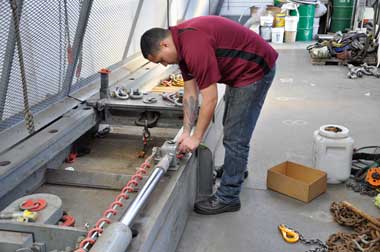Jrybicki
Active Member
- Joined
- Sep 11, 2019
- Messages
- 169
As promised, here is the official results, Over the phone I thought they had said it broke at 2979lbs but the paperwork shows 2279lbs... way less than ideal. The splice that failed was my first splice and appears it pulled out from the bury and the whipping method used on that side also mostly pulled out. The 2nd splice is still in tact however you can see where that whipping also started to fail and pull out so that end probably wouldn't have lasted much longer. Either way this splice only retained 41.4% of the ropes breaking strength though knot & rope did mark the test results as acceptable and yes may hold you fine in a static position, I would not trust this hanging 20+ feet as a potential life saving device. I am still curious about a double length bury as well as trying the class II splice with a tapered bury on the 2nd inner core with hopes of seeing closer to 80% of the ropes strength retained. For this season however, I will be sticking with the double fisherman's knot on my triangle link for the rappel line.







